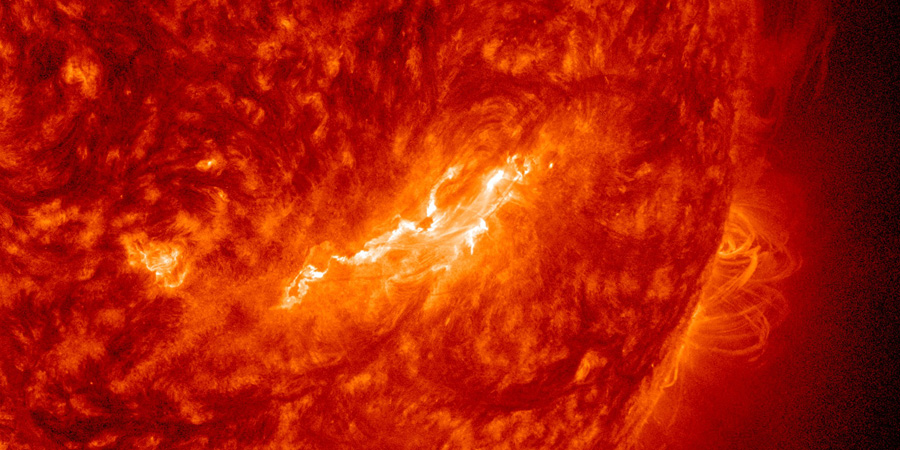Busy Sun! M-class flares and coronal mass ejections!
Sunday, 15 January 2023 13:19 UTC

Our Sun has been really busy the past few days. M-class solar flares are a regular occurrence which shouldn't go by unnoticed if you follow us on Twitter or have our iOS/Android app installed on your mobile devices. To put things in perspective, the 10.7cm Solar Radio Flux is at 228 today which is comparable to what we saw during the peak of the previous Solar Cycle. This Solar Cycle is expect to reach its peak in 2 years time. Does that mean this Solar Cycle will be strong than Solar Cycle 24? Hard to say, but considering the predictions and where we are right now, it is very much possible.
Nevertheless, with an active Sun comes a lot of flaring activity! Most of these solar flares were not associated with obvious earth-directed coronal mass ejections. There was however one eruption from sunspot region 3182 (first partial halo coronal mass ejection in the video below) which does have a chance to pass our planet as a glancing blow late on 18 January. Active to perhaps minor storm conditions should be expected if this cloud passes our planet. The second coronal mass ejection (CME) in this video came from an M6 solar flare this night at 03:42 UTC but it is expected to miss our planet.
Yesterday's long duration M4.6 solar flare from sunspot region 3182 launched a slow partial halo coronal mass ejection which could impact our planet as a glancing blow late on 18 January. pic.twitter.com/6OBWGC57T9
— SpaceWeatherLive (@_SpaceWeather_) January 15, 2023
Live northern lights stream on YouTube
Did you know we are also on YouTube? We occasionally stream live from Kiruna, Sweden and last Friday we did just that. We had clear weather and some nice enhanced geomagnetic activity which resulted in some amazing aurora up in Swedish Lapland. Check out a replay of our stream in the video player below. Skip to about 23:00h local time for how a real sub storm looks like around the arctic circle!
Thank you for reading this article! Did you have any trouble with the technical terms used in this article? Our help section is the place to be where you can find in-depth articles, a FAQ and a list with common abbreviations. Still puzzled? Just post on our forum where we will help you the best we can!
Latest news
Latest forum messages
Support SpaceWeatherLive.com!
A lot of people come to SpaceWeatherLive to follow the Sun's activity or if there is aurora to be seen, but with more traffic comes higher server costs. Consider a donation if you enjoy SpaceWeatherLive so we can keep the website online!

Space weather facts
| Last X-flare | 2025/03/28 | X1.1 |
| Last M-flare | 2025/04/21 | M1.9 |
| Last geomagnetic storm | 2025/04/20 | Kp5 (G1) |
| Spotless days | |
|---|---|
| Last spotless day | 2022/06/08 |
| Monthly mean Sunspot Number | |
|---|---|
| March 2025 | 134.2 -20.4 |
| April 2025 | 119.2 -15 |
| Last 30 days | 111.1 -31.9 |


